The Philips PML 9009 is the brand's flagship LCD television with Mini LED backlighting. It boasts impressive build quality, a stylish remote, and Philips' unique multicoloured Ambilight feature. In terms of picture quality, black levels and contrast could be improved—they don’t quite match the depth and vibrancy offered by similarly priced competitors. However, thanks to effective image algorithms, tonal quality remains satisfying. The screen’s relatively low brightness is well managed, and the inclusion of Dolby Vision provides a gateway to HDR content. The TV’s smooth colour transitions are noteworthy, surpassing some higher-end models. The PML 9009 truly excels in gaming performance, offering an experience that will please any gamer. Its motion-smoothing system also deserves praise, with two adjustable sliders allowing users to select their preferred smoothing level, making it a solid choice for sports viewing. Although the TitanOS operating system is still evolving and lacks a wide range of apps, the manufacturer is expected to address this over time.
- Matching (Score)
- Our verdict
- TV appearance
- Where to buy
- Contrast and black detail
- HDR effect quality
- Factory color reproduction
- Color reproduction after calibration
- Smoothness of tonal transitions
- Image scaling and smoothness of tonal transitions
- Blur and motion smoothness
- Console compatibility and gaming features
- Input lag
- Compatibility with PC
- Viewing angles
- TV efficiency during daytime
- Details about the matrix
- TV features
- Apps
- Playing files from USB
- Sound
Philips PML9009 / 9019 / 9059 vs Panasonic W85
Direct compare
The Xtra / PML9019 / PML9059 / PML9009 / PML9049 / AMBILIGHT TV

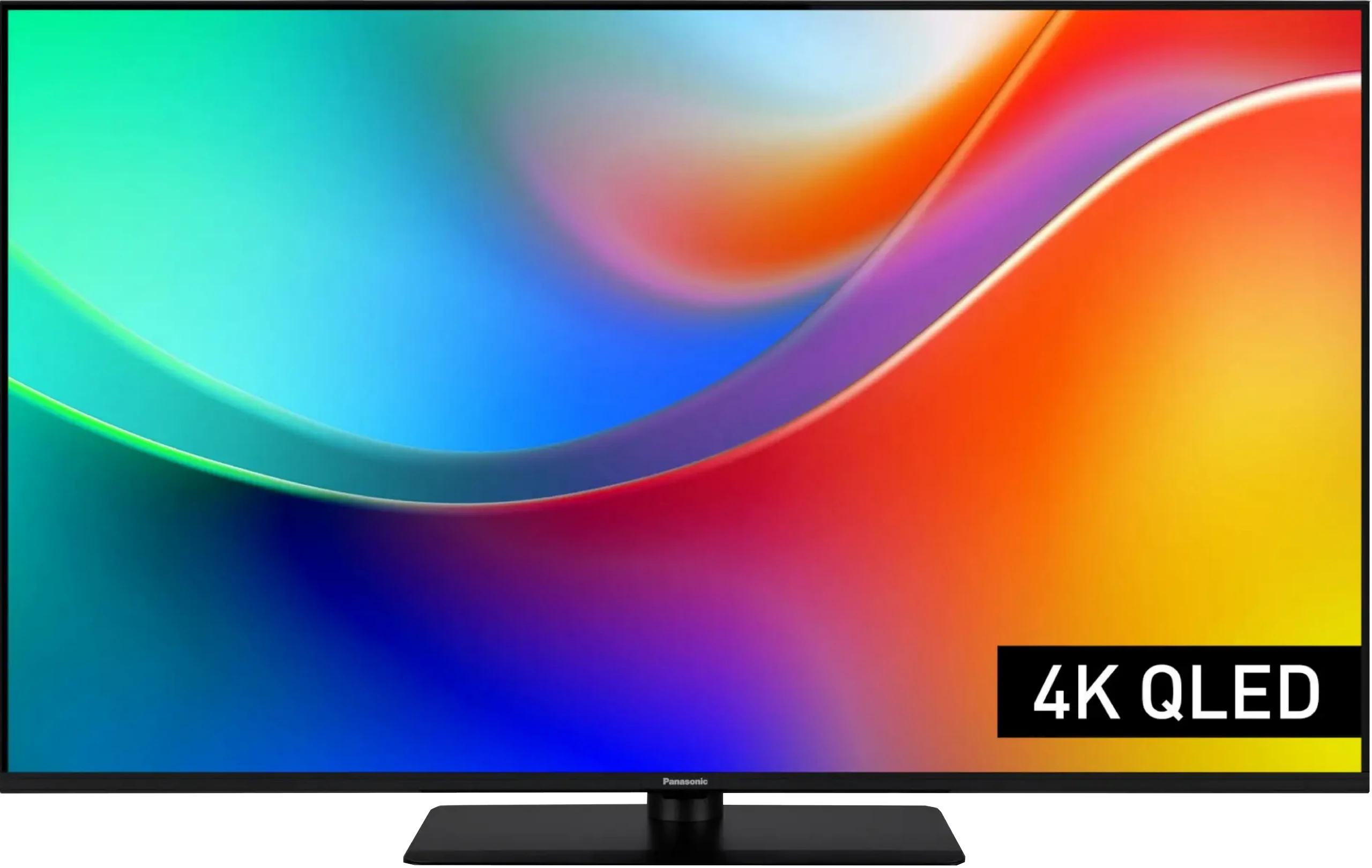
Panel type: LCD VA
Resolution: 3840x2160
System: Titan OS
Model year: 2024
Complete the survey to find out the result

Panel type: LCD VA
Resolution: 3840x2160
System: Amazon FireTV
Model year: 2025
Complete the survey to find out the result

Overall rating
6.8
6.1
Movies and series in UHD quality
6.5
5.5
Classic TV, YouTube
6.3
5.8
Sports broadcasts (TV and apps)
6.6
5.8
Gaming on console
8.5
7.7
TV as a computer monitor
8.6
8.6
Watching in bright light
6.1
4.2
Utility functions
6.1
6.8
Apps
6.2
7.6
Sound quality
6.7
5.8
Complete the survey to find out what fits your preferences
Advantages
Superb tonal quality of scenes exceeding the capabilities of the television
Well-functioning dynamic tone mapping feature
Colour reproduction after calibration
Performance when connected to a console/PC
VA matrix with high native contrast
High refresh rate 120/144 Hz
Two HDMI 2.1 ports supporting ALLM, VRR, and Dolby Vision in games
Very low input lag
Quite good color gamut coverage thanks to the QLED filter
Support for multiple HDR formats including Dolby Vision and HDR10+
Sturdy central base
Great compatibility with PC – full 4:4:4 chroma, readable fonts
Disadvantages
Significant halo/bloom effect
Poor viewing angles
TitanOs system is not as advanced as the competition
Average contrast and black levels
Low brightness (below 270 nits) – no real HDR
HDR mode in games is poorly developed, with incorrect HGiG implementation
Weak media file player
The FireTV system in Europe is poorly developed: there are micro stutters and awkward translations, and many apps are missing
Average sound quality, lacking depth
Motion smoothing doesn't want to work
Our verdict
The Panasonic W85B is a TV that aims to prove that the Japanese brand can produce not only top-tier devices but also something more "for the people." And it really does look decent on paper: a VA panel with solid contrast, high refresh rates of 120/144 Hz, two full HDMI 2.1 ports, and low input lag. It sounds like a great setup for a gamer or someone just looking for an affordable TV with good fundamentals. However, the reality is a bit more complicated. The W85B performs well mainly with SDR content, especially after calibration, and will serve well for typical everyday use. But when we start expecting more from it—for example, counting on strong HDR performance or greater immersion in games with that mode activated—the TV quickly shows its limitations. Its brightness is low and the lack of local dimming becomes quite noticeable during evening viewing. Therefore, we view the W85B more as a "daily" TV—ideal for someone who watches terrestrial television, YouTube, or SDR streaming, and wants to connect a console or PC for 120/144 Hz (but without HDR). In that role, it performs very well. Is it a TV for everyone? Definitely not. But if we accept its limitations and approach it with reasonable expectations, the W85B can provide a lot of enjoyment for a relatively sensible price.
TV appearance




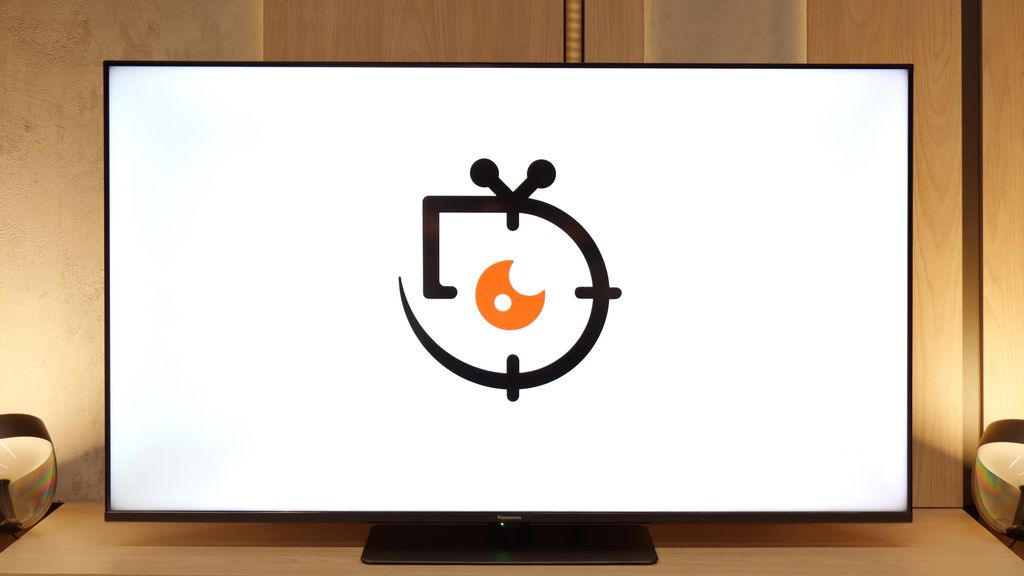
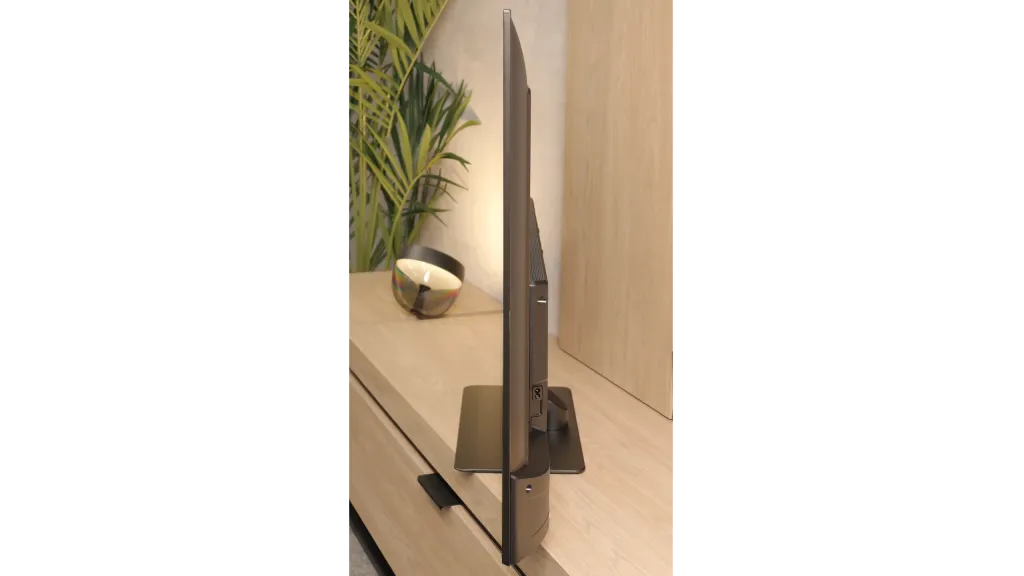
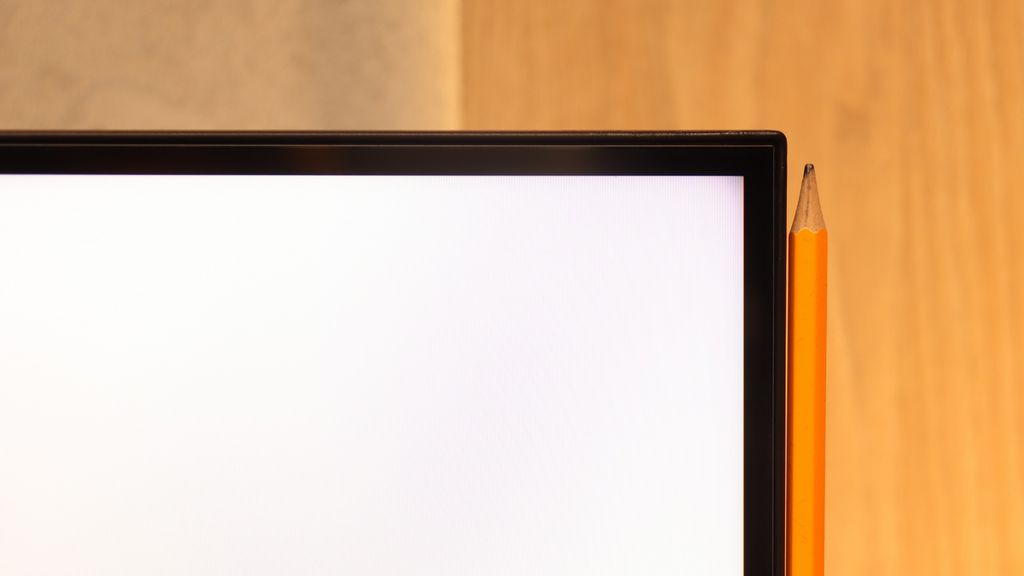
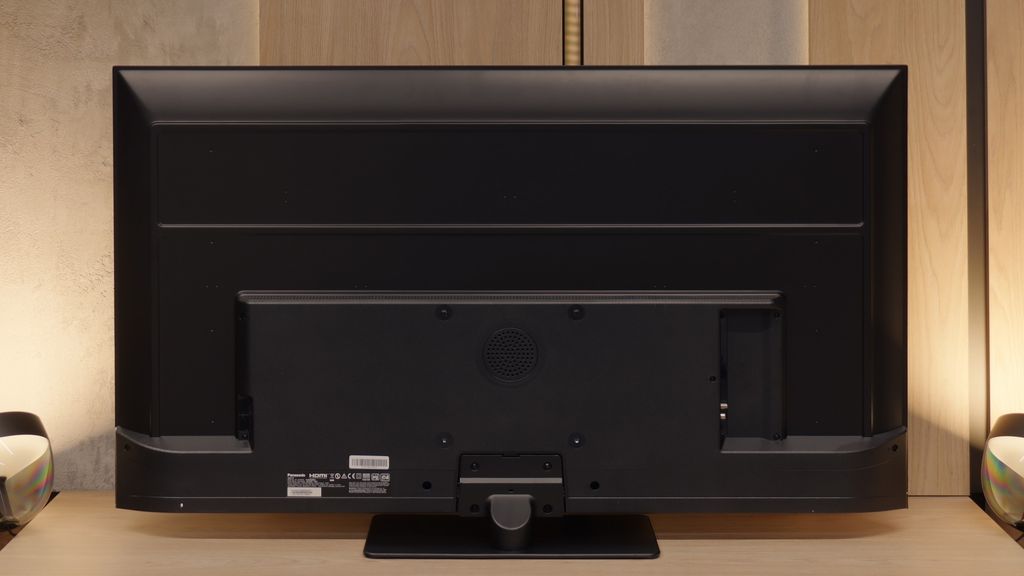
Contrast and black detail
6.6/10
5.3/10
Local dimming function: Yes, number of zones: 75 (15 x 5)
Local dimming function: No
Contrast:

Result
132,000:1

Result
16,550:1

Result
14,450:1

Result
7,850:1

Result
6,650:1

Result
4,300:1

Result
4,250:1

Result
4,200:1

Result
4,400:1

Result
3,150:1
Halo effect and black detail visibility:

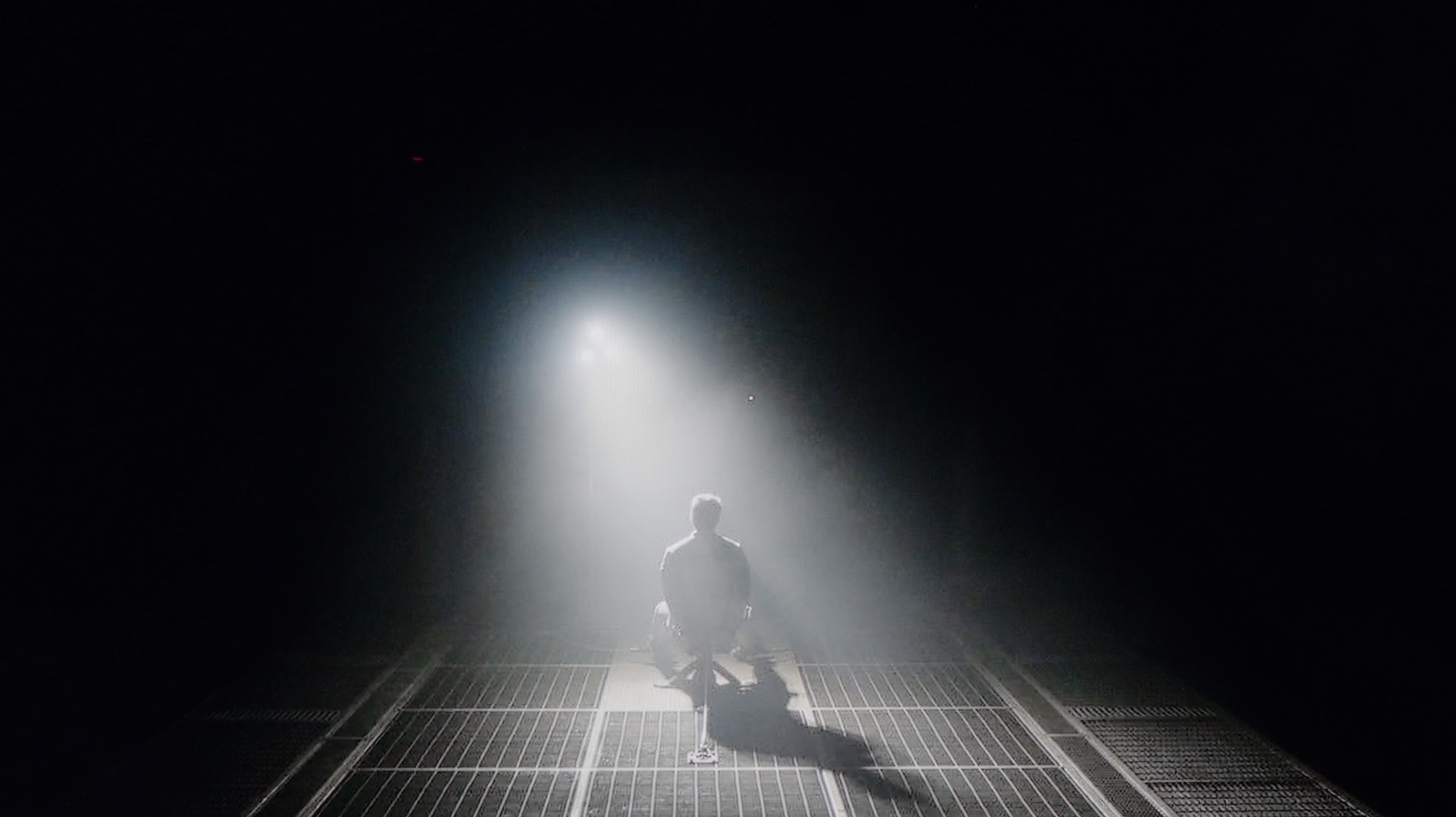
The Philips PML9009 features a high-contrast VA panel. While it doesn’t produce the same depth and dimensionality as OLED displays, it remains a solid choice for home cinema, outperforming IPS/ADS panels in this regard. The measured static contrast ratio, at 6000:1 without local dimming, is commendable and showcases the Mini LED backlighting capabilities of this model. Though the contrast and black level measurements aren’t among the highest, the television performed well in certain scenes, such as Oblivion, where it effectively separated light – an achievement not always seen in much pricier units. Testing was conducted at medium power dimming; the lowest dimming level didn’t achieve satisfactory black levels, while the highest setting led to detail loss. Unfortunately, our test with The Revenant highlighted some issues. While background details were clear, the dimming zones disrupted the overall tonal balance, resulting in a noticeable halo effect around the subtitles.
The W85B is Panasonic's entry-level LCD, so one shouldn't expect miracles in this category, but... the VA panel really does a great job here. Its biggest advantage is simply better contrast than in popular IPS panels – blacks often look gray there, while here you can actually see deeper tones. In the scenes we tested, the contrast held around 4000:1, which translates to roughly four times better performance than in IPS panels. Of course, there's no local dimming, so in difficult conditions, when it gets really dark in the room, black can resemble navy more than absolute pitch black. This is the difference you can see compared to OLEDs or Mini-LEDs. But in everyday viewing – a series, a match, a movie in the evening in the living room – this contrast is more than sufficient. The image has the right depth, and the W85B doesn't give the feeling of a "washed-out" television.
HDR effect quality
6.1/10
4.2/10
Luminance measurements in HDR:

Result
548 nit

Result
550 nit

Result
824 nit

Result
491 nit

Result
582 nit

Result
228 nit

Result
249 nit

Result
283 nit

Result
282 nit

Result
297 nit
Scene from the movie “Pan” (about 2800 nits)


Scene from the movie “Billy Lynn” (about 1100 nits)


Static HDR10


Dynamic: Dolby Vision
Dynamic: Dolby Vision


HDR luminance chart:
Panasonic W85
HDR luminance
Philips PML9009 / 9019 / 9059
HDR luminance
The Philips PML9009 struggles to deliver the highest HDR performance. Scenes with effects around 550 nits don’t provide particularly impressive lighting, though the effects remain stable, an improvement over SDR materials. A notable exception is in Gemini Man, where a flashlight as the sole light source stands out. This is likely due to the absence of large dark areas and the relatively small size of the light source compared to scenes with larger, brighter elements like the sun. While the brightness results in HDR content aren’t quite strong enough to recommend this TV for productions utilising a wide colour gamut, it’s worth mentioning that the model does achieve decent coverage, reaching 93% of the DCI-P3 spectrum.
Unfortunately, we don't have good news here. The Panasonic W85B is rather dim – its peak brightness does not exceed 300 nits, so it's hard to talk about any true HDR effect. In practice, this means that scenes which on other screens can "shine" and make an impression, here look simply like regular SDR with a slight boost in colors. Our measurements and film tests confirmed this – regardless of the content, the W85B won't extract anything more from HDR. So if someone is looking for a TV specifically for HDR, it's better to look towards other models. As a consolation, the fact remains that in terms of colors, the W85B performs quite well. It's a QLED TV, so its color gamut coverage is wide, and most films and series look natural, without a distinct "washed out" effect. The colors are saturated, so during regular viewing, there is no sense that something is quite wrong.
Factory color reproduction
5.3/10
4.2/10


Factory Mode
After calibration


Factory Mode
After calibration
During testing, the Philips PML9009 performed best in the factory "Filmmaker" mode, which we evaluated across both SDR and HDR content. A key characteristic observed in this mode is the EOTF curve’s behaviour in HDR content and gamma settings in SDR, designed to enhance image accuracy. However, the PML9009 presented noticeable issues, particularly with white balance, as a pronounced red dominance created a yellow tint across the entire image. This affected skin tones and white areas, with faces and whites appearing unnaturally warm. The colour shift was confirmed through the "ColourChecker" palette, where colours leaned towards warmer shades.
In the gamma analysis, responsible for image contrast, we noticed considerable inaccuracies early on. Our measured values spiked above the reference, causing dark scenes to lose detail and merge visually up to about 10% screen brightness. Following this, the values dropped below the target line, further degrading contrast—an area already challenging for this model.
In HDR content, the white balance remained similarly flawed, and the EOTF curve also restricted brightness levels, resulting in a dim, muted image. Colour inaccuracies were even more pronounced here, with lower luminance levels causing large deviations from accurate colours, which were clearly visible on the error graph, often exceeding acceptable limits. While aiming for cinematic quality, this mode ultimately fell short in delivering balanced colour and contrast fidelity.
While testing the Panasonic W85B, we of course started with the Filmmaker mode, as it is the gold standard today for watching content "as the director intended." The problem is that this TV is quite far from those intentions. The biggest issue turned out to be an excess of red – in both SDR and HDR. The picture often looked overly warm, and in some scenes, it appeared almost "blazing." Additionally, there’s the issue of brightness management. When we looked at the gamma and EOTF charts, it was clear as day that in most scenes, the TV brightens the image more than it should. The effect was easy to predict. Details can get lost, leading to flattening and clipping across the entire screen. Of course, we know how to improve this, but it must be said honestly that it requires quite a bit of work in calibration. Out of the box, the W85B does not provide a reference-level picture – it is rather a TV that will always interpret colors and brightness a bit "its own way" without professional adjustments. Unfortunately, this is to the detriment of the viewer.
Color reproduction after calibration
7.5/10
6.9/10




Philips has long provided sophisticated calibration tools, including 2-point and 20-point grayscale adjustments as well as an advanced CMS (Colour Management System). These allow users to make significant improvements, and even those less attentive to image quality will likely notice a positive difference post-calibration. Both SDR and HDR content benefit from this process, notably eliminating the prominent yellow tint caused by an overemphasis on red in the white balance.
For SDR content, although gamma adjustments don’t entirely resolve the loss of detail in dark areas, the overall improvements bring most content to an impressive standard, with minimal, hardly perceptible errors. Colour accuracy is notably enhanced, achieving nearly reference quality with low deltaE errors.
HDR content, however, remains somewhat limited due to the display’s lower brightness capability. While the white balance has largely been corrected, a slight blue tint can occasionally appear. The EOTF curve aligns very well, providing accurate geometry, though colour errors persist due to the limited luminance. This calibration offers a substantial improvement but may still fall short for viewers who expect high brightness levels in HDR.
Fortunately, calibration made a significant difference for the Panasonic W85B, especially in SDR content. Here, the improvement was really noticeable – we managed to balance the white and reasonably tame the TV's tendency to excessively brighten the entire image. The picture became more coherent, and the colors gained a naturalness that was lacking in the factory settings. Admittedly, the results from the Color Checker are not perfect, as the W85B has visible issues with green saturation, but overall, we assess the post-calibration effect in SDR very positively. The situation with HDR is a bit different. Here, we were also able to limit the tendency to warm up the entire scene, so the image turned out much better than in the factory settings. However, the same problem we mentioned earlier is still evident – the TV interprets the image too "in its own way" and brightens the entire frame. The lack of local dimming only exacerbates this effect. In summary, briefly in SDR content, the W85B performs really well after calibration and is perfectly suitable for everyday viewing. However, in HDR, even after adjustments, it is still hard to unequivocally recommend it for serious viewing sessions.
Smoothness of tonal transitions
7/10
9.1/10












In many films or series, you may have noticed instances where colour bands appear in areas that should exhibit smooth transitions. This is why we evaluate tonal transitions as part of our testing. The Philips PML9009 performed admirably in this area across all test scenes. While a few elements could benefit from finer processing, the overall result was impressive. Notably, it handled the challenging scene from The Green Knight exceptionally well, with no significant stuttering or unwanted artefacts visible, proving the TV’s capability to maintain smooth gradients even in demanding scenes.
Here we can confidently praise the Panasonic W85B. The television handles color blending and tonal transitions really remarkably. Gradients look smooth, without visible bands or artificial outlines. As a result, the image gains a natural quality, and sequences with a lot of subtle shades – like the sky or blurred backgrounds – look exceptionally good for this class of equipment.
Image scaling and smoothness of tonal transitions
7.2/10
6/10
Smooth transition function

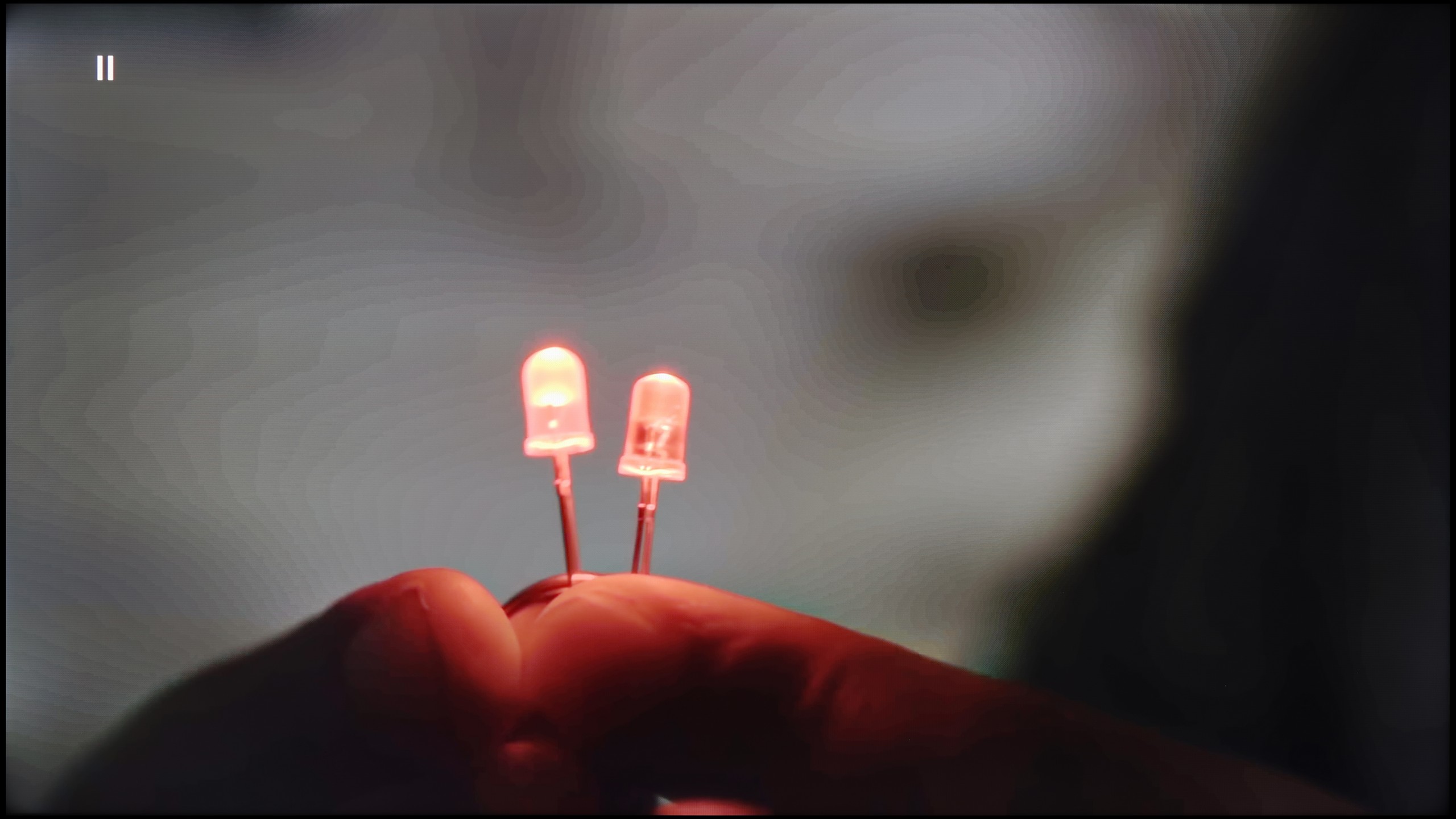
Image without overscan on the SD signal


Given the impressive handling of tonal transitions by the Philips PML9009, one might expect similar success in the image scaling test. However, the results were less than stellar. When upscaling lower-quality images, like those from certain TV programmes or older films, the Philips algorithm tended to blur fine details noticeably, especially in intricate elements like fine branches or a model's hair.
On the other hand, the tonal transition performance remains noteworthy, with the TV offering several levels of smoothing. Even at the lowest setting, it effectively addresses non-smooth transitions in most materials, and crucially, it preserves the film grain effect, maintaining fidelity to the director's vision. However, it’s worth noting that some fine details may still appear slightly softened.
With native SDR content, the Panasonic W85B performs very well – tonal transitions are smooth and natural, without artificial bands or clear contours. However, the situation looks worse with lower resolution materials. This is where the television has the biggest problem with "beautifying" the image. The lack of any option in the menu that would allow for improving gradation means that with older films or materials from YouTube, one can sometimes notice slight issues with color blending.
Fortunately, upscaling, or increasing the quality of lower resolution content, performs much better. This is definitely a strong point of this model – the image is scaled cleanly and in detail, and the television handles this better than one might expect from such an affordable device. This is thanks to the HCX processor, which Panasonic has been developing for years, and it shows that even in the lower series, it can do a good job.
Blur and motion smoothness
7.7/10
6.5/10

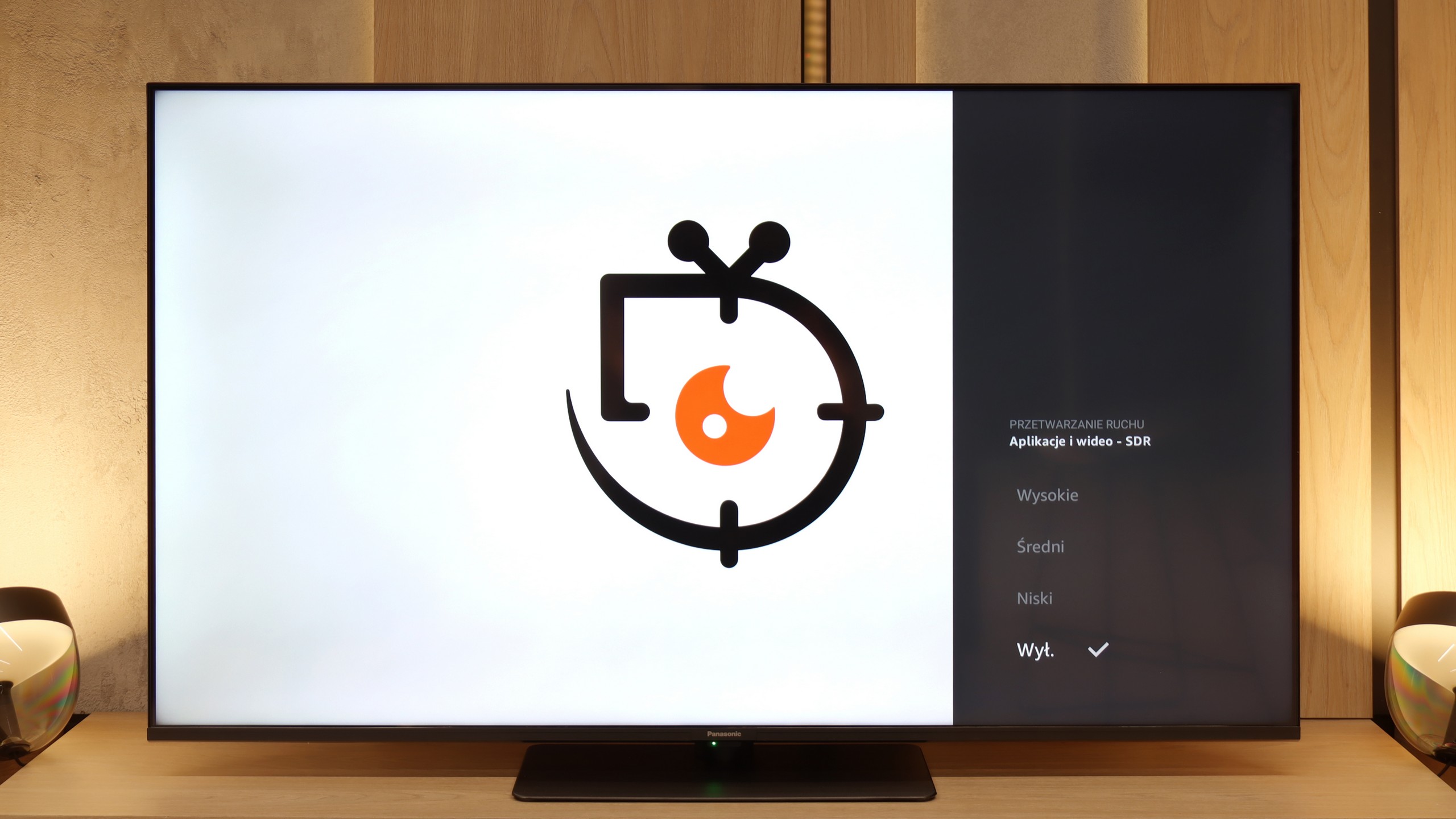
Blur (native resolution, maximum refresh rate):






Smużenie ():
Smużenie (4K@144Hz):



The Philips PML9009 has a 120 Hz native refresh rate, a baseline standard for watching sports and an ideal setting for gaming on consoles or PCs. Philips includes an effective motion-enhancement system for users who want to reduce the stutter of 24 fps content or need fluid motion for fast-paced scenes, like in football matches. The dedicated "Smoothness" slider effectively mitigates stuttering, while "Motion Blur Reduction" enhances the sharpness of dynamic content. Each setting produces a noticeable difference, so users can tailor the motion effects to their preferences. Our recommended setup achieves a moderate smoothing effect, avoiding the exaggerated “soap opera” appearance.
Regarding pixel response time, VA panels like this generally fall short compared to OLED or even IPS panels, which can lead to a slight "black halo" trailing behind fast-moving objects. Although not a frequent issue with this TV, the effect can be seen in certain scenes.
At first glance, everything looks good – the Panasonic W85B has a 120 Hz panel and even a 144 Hz mode, so it seems that it should handle smooth motion well. The problem begins when we look into the settings. The options for improving fluidity are supposedly present in the menu, but in practice… they change nothing. No matter what we choose, the image looks the same. On top of that, there's a lack of BFI, which is the black frame insertion mode that helps sharpen motion in many TVs. And suddenly, it turns out that despite having a strong panel, the W85B doesn't give us any real tools to adjust that motion to our needs. It only works well when the source itself operates at a higher frequency – for example, games at 120 Hz. But when it comes to movies or sports, we just have to take what the TV shows us, because there's nothing more we can do about it.
Console compatibility and gaming features
9.8/10
8.5/10
- ALLM
- VRR
- VRR range48 - 144Hz48 - 144Hz
- Dolby Vision Game Mode
- Correct implementation of HGIG
- 1080p@120Hz
- 1440p@120Hz
- 4K@120Hz
- Game bar

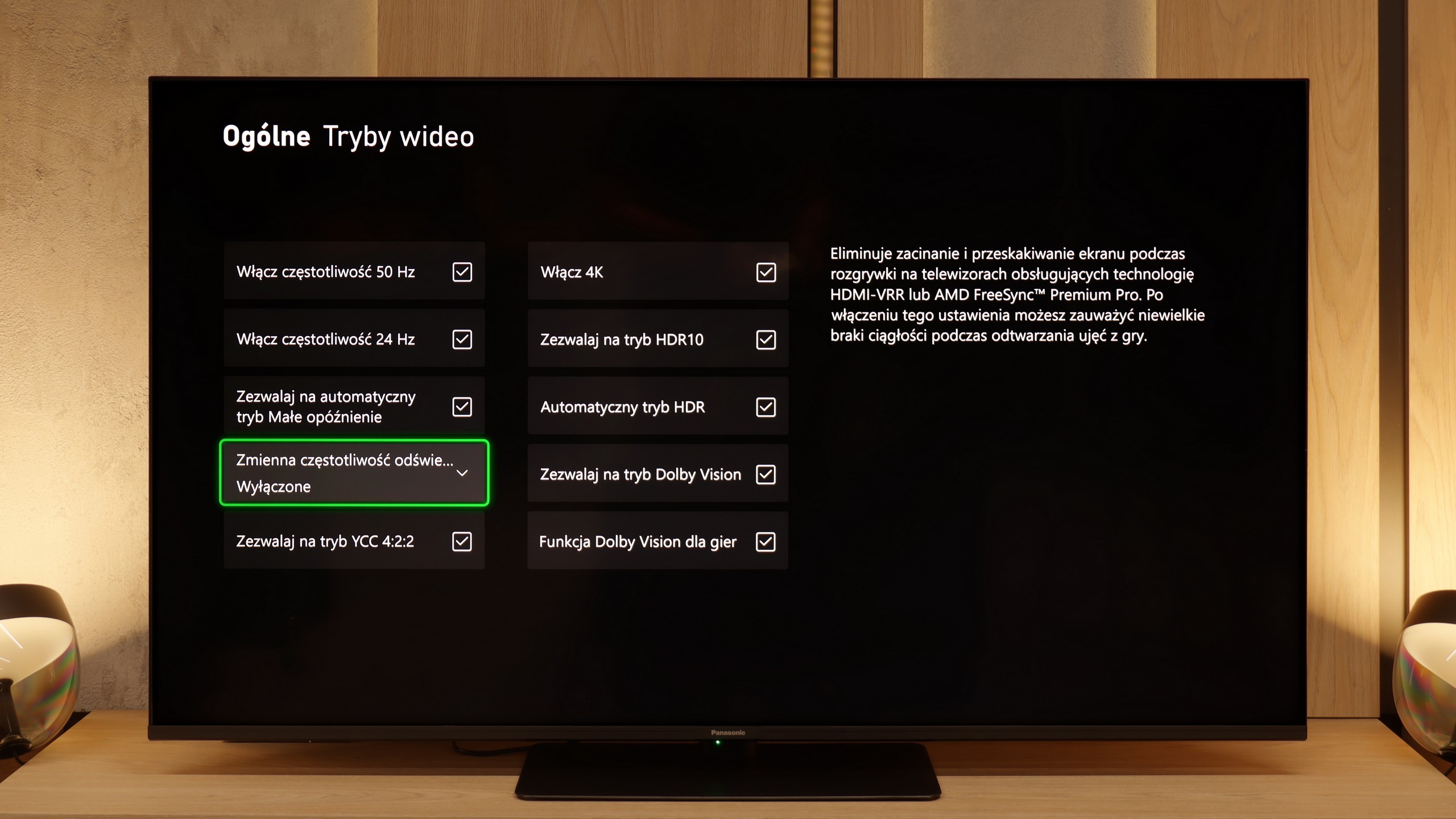

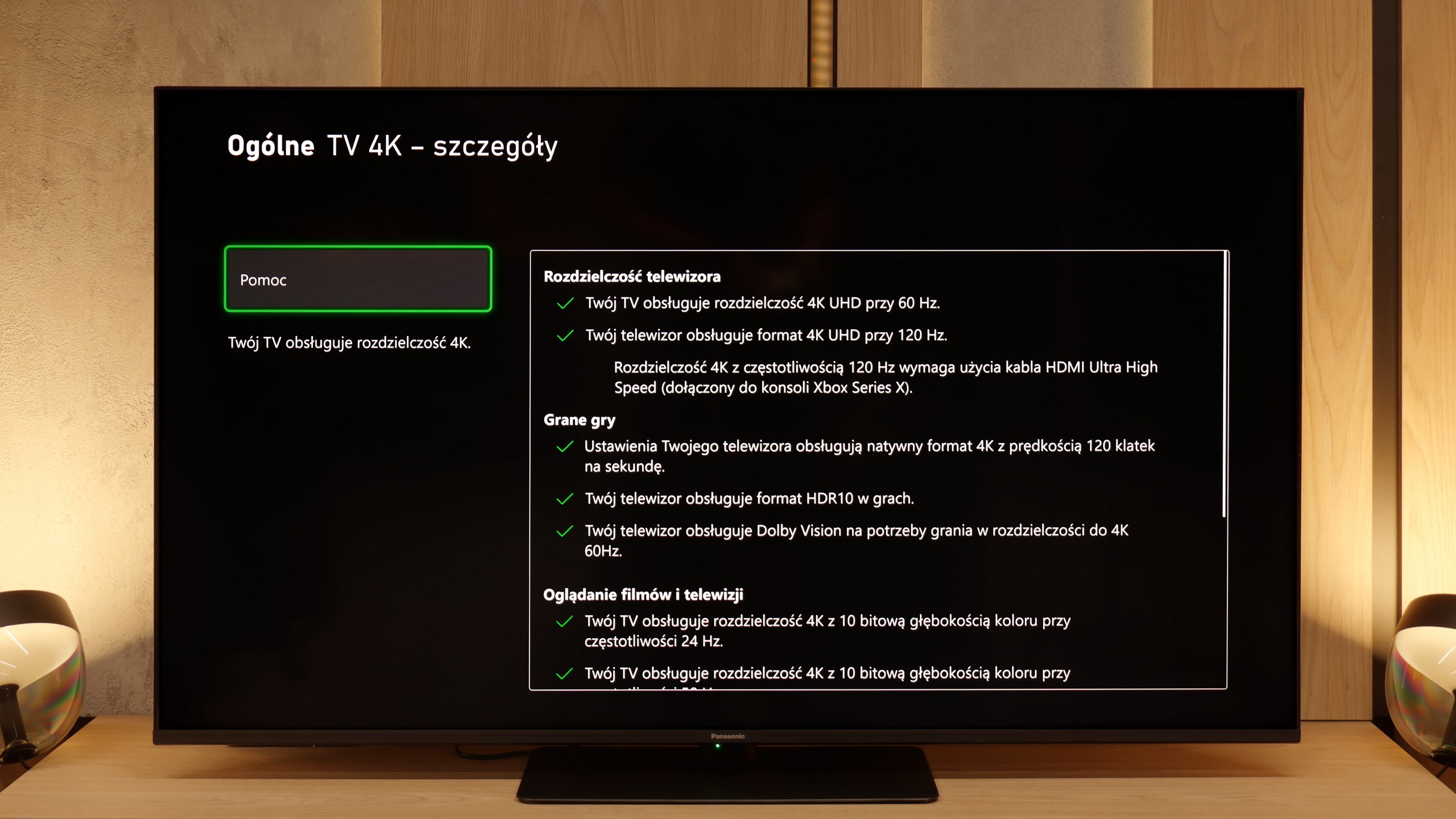

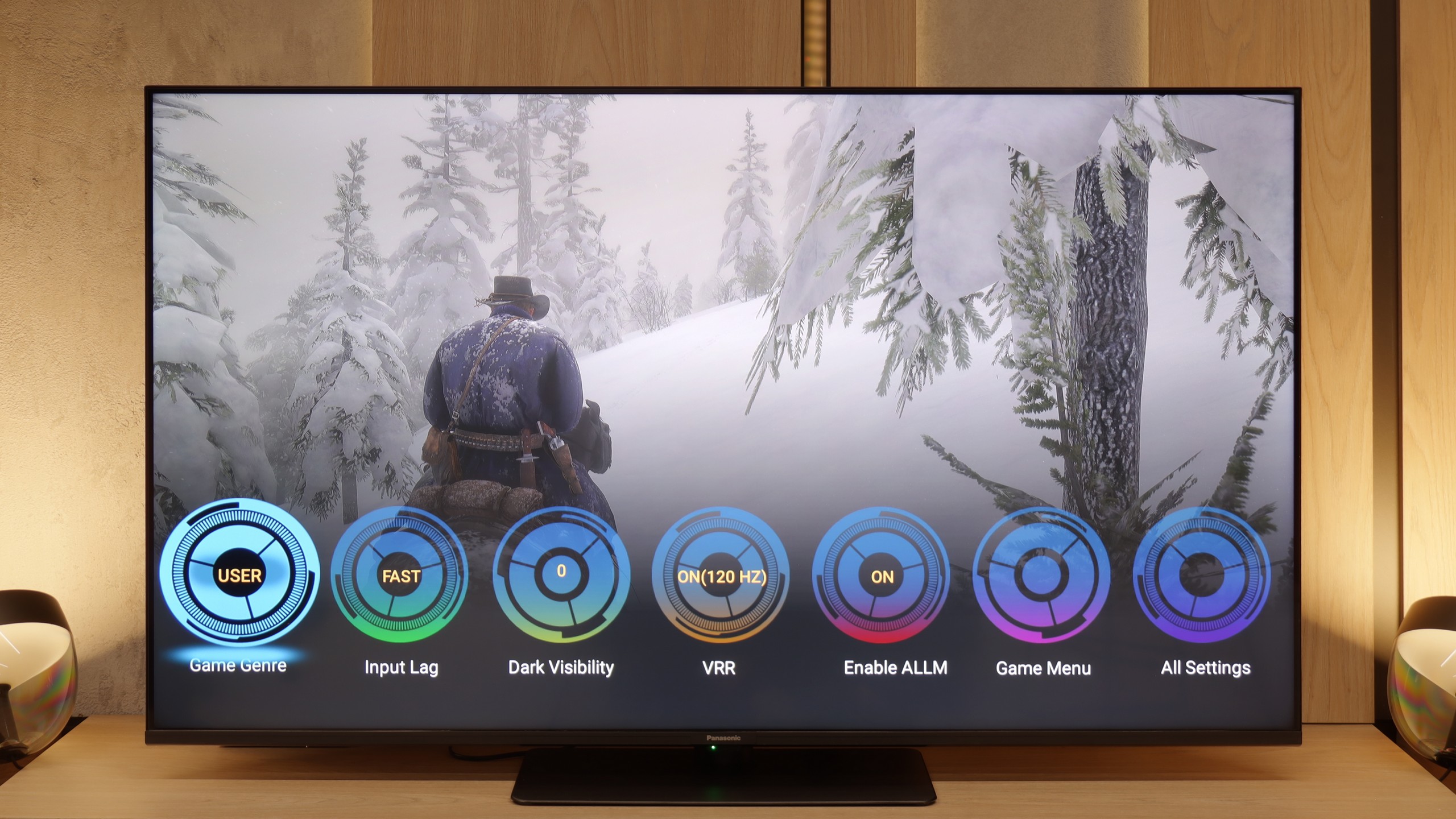

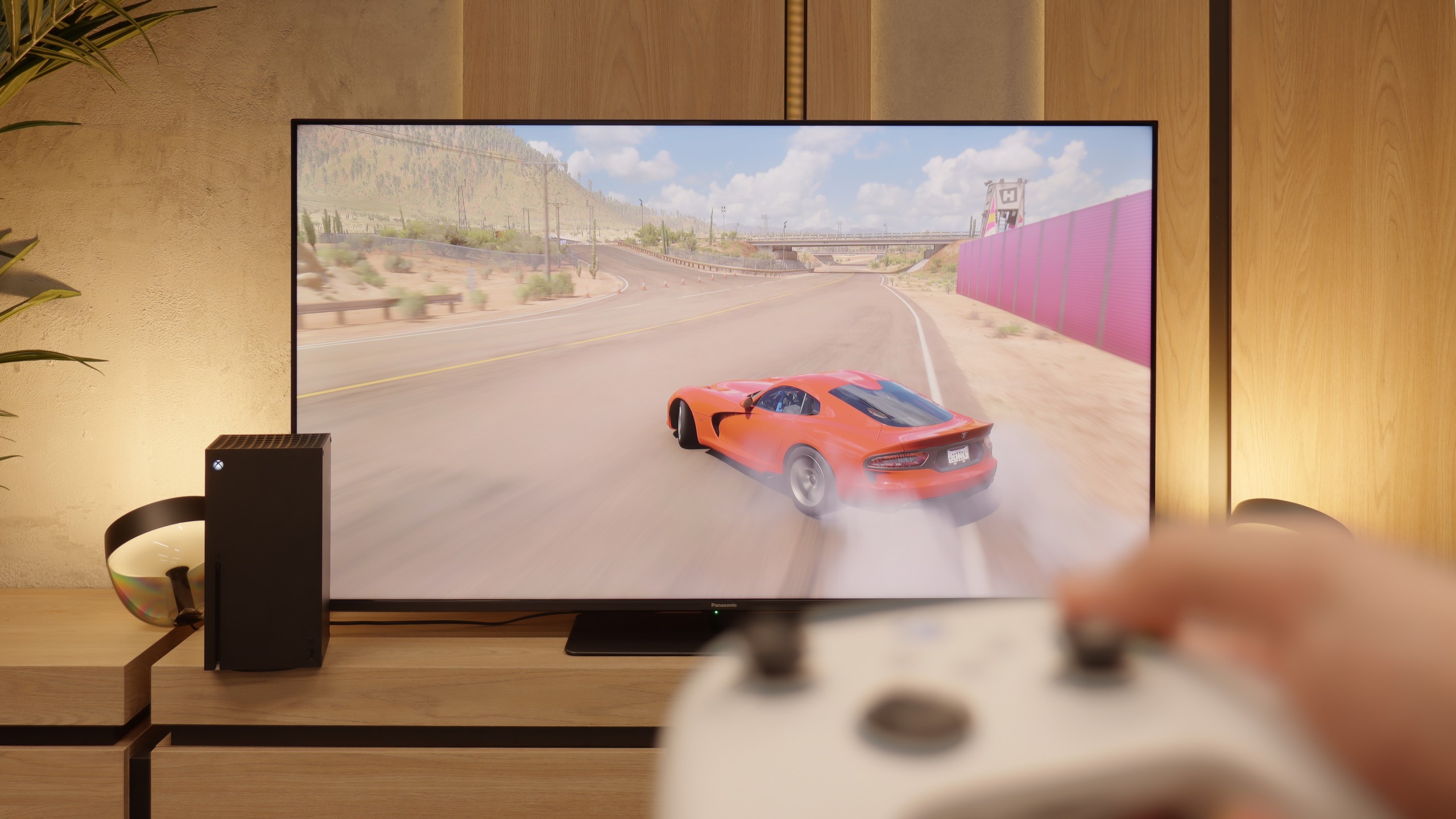
The Philips PML9009, with HDMI 2.1 ports supporting full bandwidth, is thoroughly equipped with gamer-focused features. Core functions like Variable Refresh Rate (VRR) and Auto Low Latency Mode (ALLM) are included, as well as the additional perks of G-Sync and FreeSync compatibility and low-lag HDR Dolby Vision support. All these gaming features activate seamlessly, proving this model’s suitability for gaming. The TV’s HGIG mode, particularly beneficial for gaming, adjusts HDR effects to the television’s capabilities to avoid image dimming and blooming, an advantage given the still limited number of games supporting Dolby Vision.
For added convenience, the PML9009 has a GameBar menu, allowing in-game setting adjustments without needing to exit. This menu includes features like a crosshair option and black level correction, which can enhance the visibility of shadowed areas—ideal for competitive play.
Overall, the Philips PML9009 offers a comprehensive setup for gamers, supporting VRR, ALLM, G-Sync, FreeSync, and HDR Dolby Vision to deliver immersive, high-quality gaming experiences across a wide range of titles.
On paper, the Panasonic W85B looks really solid. Here we have two full HDMI 2.1 ports, support for ALLM, variable refresh rate, Dolby Vision in games, and of course, a high refresh rate for the panel itself. Additionally, there’s the characteristic Panasonic game bar that allows you to check key parameters with one click and quickly change them if necessary. Sounds great, but the problem arises when we activate HDR. Here, the W85B significantly falters because it lacks proper HGiG implementation – the TV manages brightness poorly, and instead of faithful image rendering, we get scenes that are too bright, sometimes even blown out. The solution? The simplest – turn off HDR in the console settings and leave everything in SDR. And here it gets really interesting, because in this scenario, the W85B shows its better side. Low input lag, high smoothness thanks to 120 Hz – all of this makes gaming look phenomenal. Yes, HDR can be sacrificed, but if responsiveness and smooth gameplay are priorities, the W85B provides a lot of fun.
Input lag
9.6/10
9.8/10
SDR
HDR
Dolby Vision
The Philips PML9009 excels in input lag measurements, showcasing impressive performance across various signals and resolutions. Gamers will appreciate the manufacturer’s optimisation, with an exceptionally low input lag of 8 ms when playing at 4K120Hz with HDR—virtually imperceptible even in fast-paced online games. Furthermore, the game mode with Dolby Vision also maintains a commendable response time of 16 ms, ensuring that players experience minimal delay during gameplay. This combination of low input lag and effective game mode implementation solidifies the PML9009 as an excellent choice for competitive gamers seeking a responsive, immersive experience.
There is really nothing to be afraid of here. The Panasonic W85B reacts instantly to our movements, and the values measured in tests can easily compete with gaming monitors. With a 120 Hz signal, the input lag is around 8–10 ms, and at 60 Hz it hovers around 17–20 ms. In practice, this means one thing – no delays, no frustration! You press the button, and the action happens right away on the screen.
Compatibility with PC
8.6/10
8.6/10

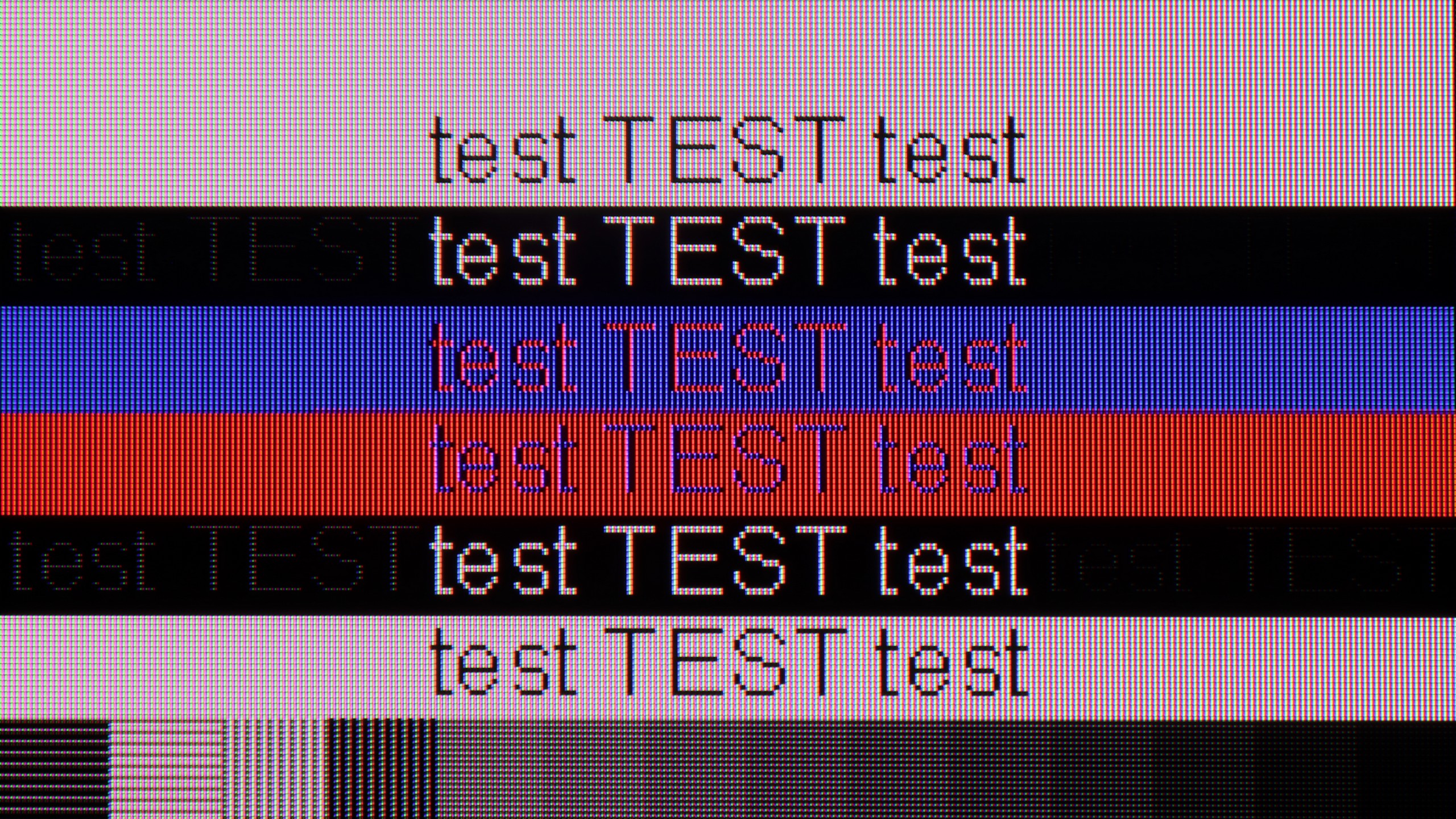
The Philips PML9009 also excels in everyday tasks, with measured delays of just 8 ms providing nearly instantaneous reactions in the mouse-screen-eye connection. Its proper implementation of chroma 4:4:4 ensures crisp, sharp fonts, making it ideal for text work. While the subpixel layout of the matrix is BGR, this doesn't create any issues when using the Windows operating system. However, users on other systems may encounter challenges with text rendering, as those platforms may struggle to convert text accurately. Overall, the PML9009 is a versatile display suitable for gaming and daily productivity tasks.
The Panasonic W85B performs surprisingly well as a computer monitor. It's practically perfect for office work – the fonts are sharp and very readable thanks to full chroma 4:4:4 support, so it's easy to type, browse the web, or work on spreadsheets. But the real "fun" starts with gaming. The TV easily handles refresh rates up to 144 Hz for PC, and it also supports popular image synchronization technologies like NVIDIA G-Sync and AMD FreeSync. Because of this, we don't have to worry about screen tearing or micro-stutters – the gameplay is smooth and simply looks great.
Viewing angles
2.6/10
3.2/10
A commonly known drawback of VA panels that do not have an angle coating is their poor viewing angles. This is no different this time. Even after a slight shift off-axis, the image becomes washed out, and the colours undergo significant degradation.
Here you can see the biggest price we pay for the high quality of the VA matrix contrast. The W85B, like most TVs with this type of panel, does not perform well when viewing from a greater angle. Colors lose intensity and the image begins to fade as soon as we move away from the screen's axis. This is not a flaw of Panasonic itself, but rather a feature of VA technology – great contrast in exchange for weaker viewing angles. So if you plan to watch movies with a larger group and often sit "to the side," keep this in mind.
TV efficiency during daytime
6.1/10
4.2/10

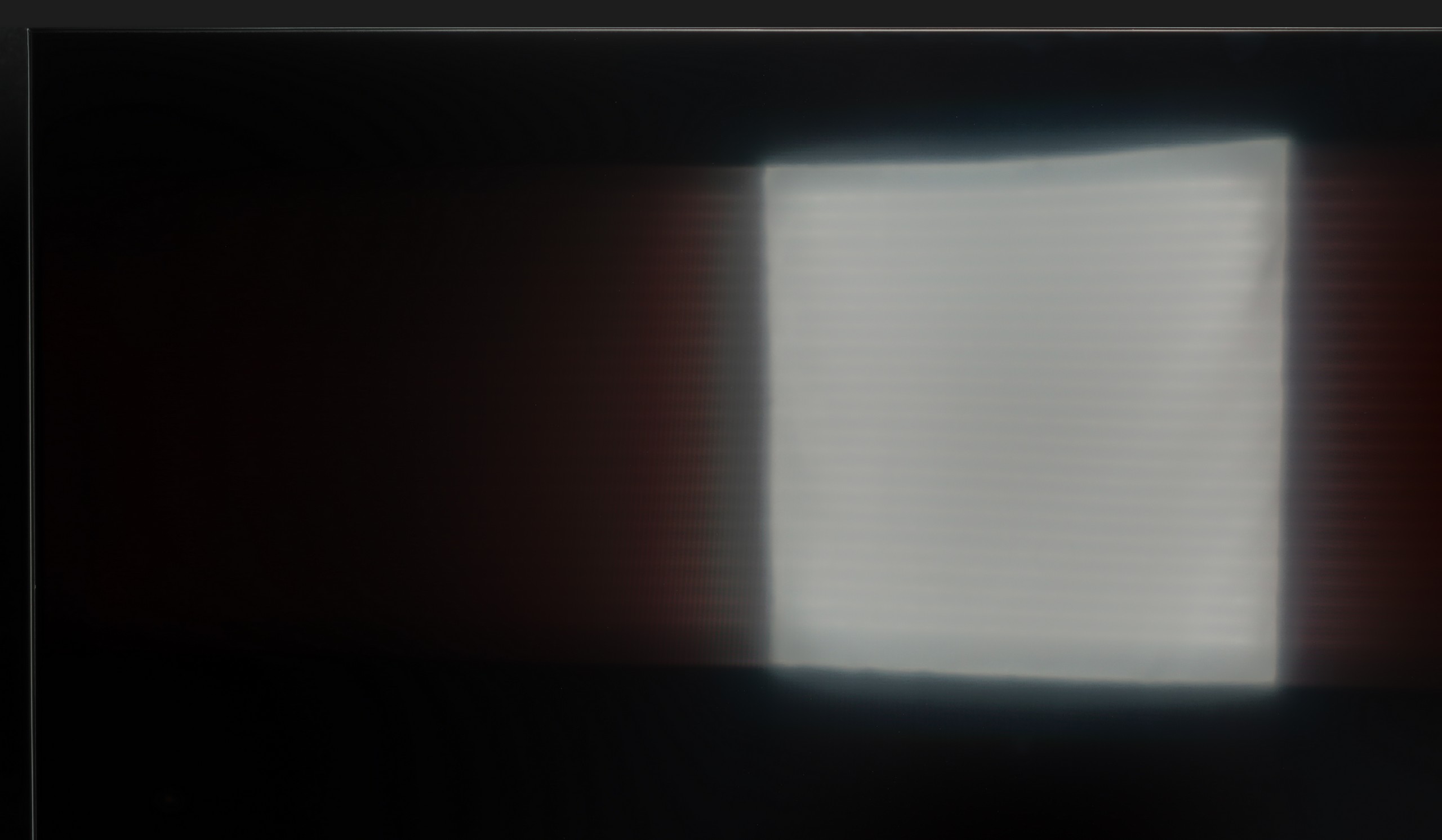


Matrix brightness
Average luminance SDR
Panasonic W85: 263 cd/m2
Philips PML9009 / 9019 / 9059: 564 cd/m2
While the Philips PML9009 offers good brightness levels for SDR materials—making it suitable for evening or dark-room viewing—the reflection suppression is only average. This can be attributed to the satin finish of the panel, which is prone to reflections from various light sources, as it neither absorbs nor diffuses them effectively. However, the relatively high brightness in SDR mode enables the television to perform adequately in brighter rooms, often outperforming many OLED models in this regard. This makes it a viable option for users who might watch content in well-lit environments.
The Panasonic W85B has a satin finish panel that handles glare reduction and color retention quite well, even in bright light coming from windows or lamps. There is no "mirror" effect here, so watching television in a typical living room during the day is comfortable. However, the problem arises when we encounter really bright rooms – the TV does not have high brightness, so it won't cut through very strong sunlight. It's simply a screen that performs best in controlled conditions.
Details about the matrix
Subpixel Structure:

Panel uniformity and thermal imaging:

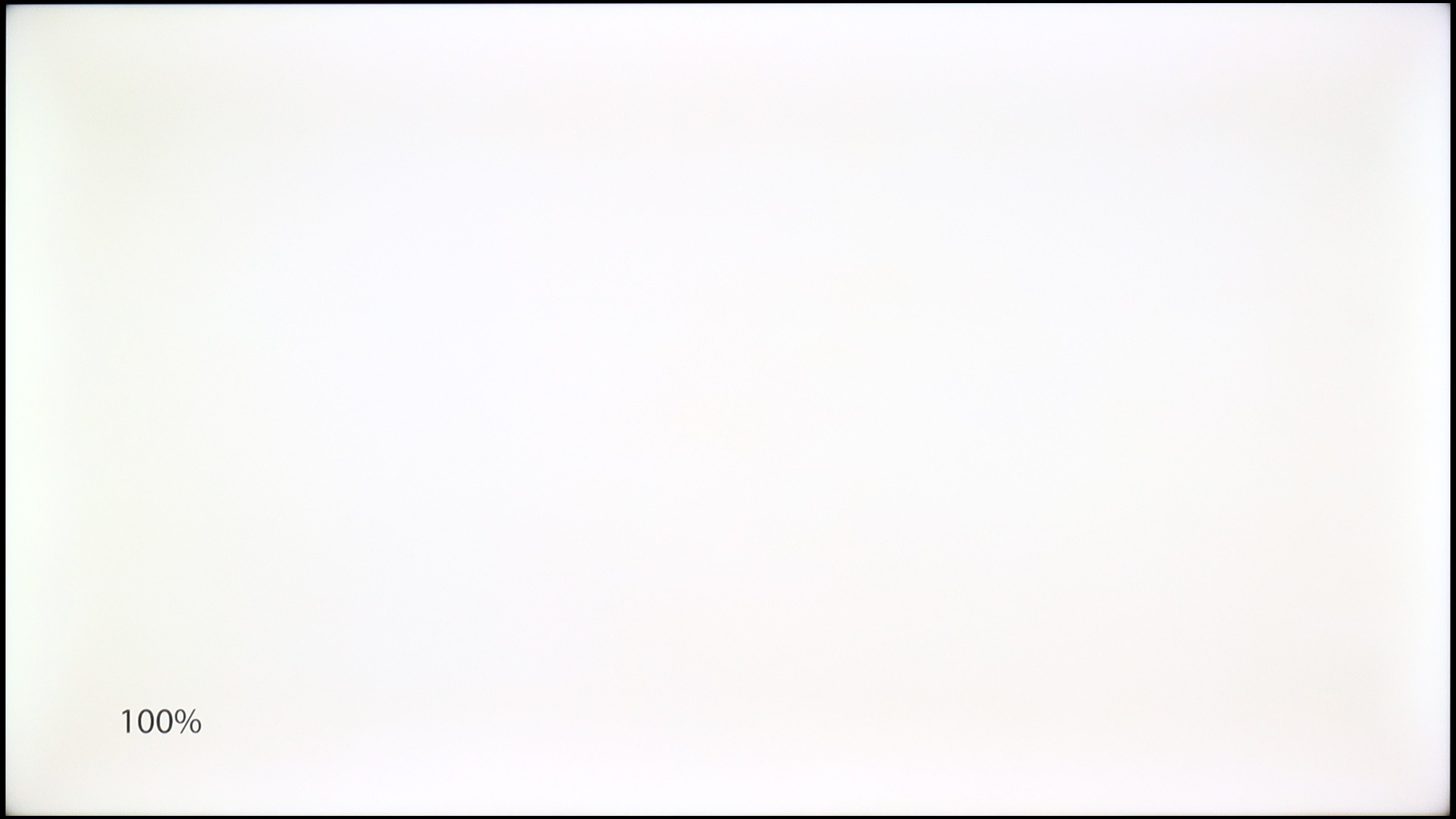
Philips PML9009 / 9019 / 9059
Panasonic W85
TV features
6.1/10
6.8/10
- HDMI inputs0 x HDMI 2.0, 4 x HDMI 2.1 48Gbps1 x HDMI 2.0, 2 x HDMI 2.1 48Gbps
- OutputsToslink (Optical audio), eARC (HDMI), ARC (HDMI), Mini-Jack (Headphones)Toslink (Optical audio), eARC (HDMI), ARC (HDMI), Mini-Jack (Headphones)
- Network InterfacesWi-Fi 2.4GHz, Wi-Fi 5GHz, Ethernet (LAN) 100MbpsWi-Fi 2.4GHz, Wi-Fi 5GHz, Ethernet (LAN) 100Mbps
- TV receptionDVB-T, DVB-T2, DVB-S, DVB-S2, DVB-CDVB-T, DVB-T2, DVB-S, DVB-S2
Classic features:
- Recording to USB (terrestrial TV)
- Recording programming
- Picture in Picture (PiP)
- RF remote control (no need to aim at the screen)
- Backlit remote control
- Teletext
- Audio only mode
- Bluetooth headphones support
- Simultaneous Bluetooth headphones & TV audio
Smart features:
- AirPlay
- Screen mirroring (Windows Miracast)
- Voice search
- Voice search in native language
- Ability to connect a keyboard and mouse



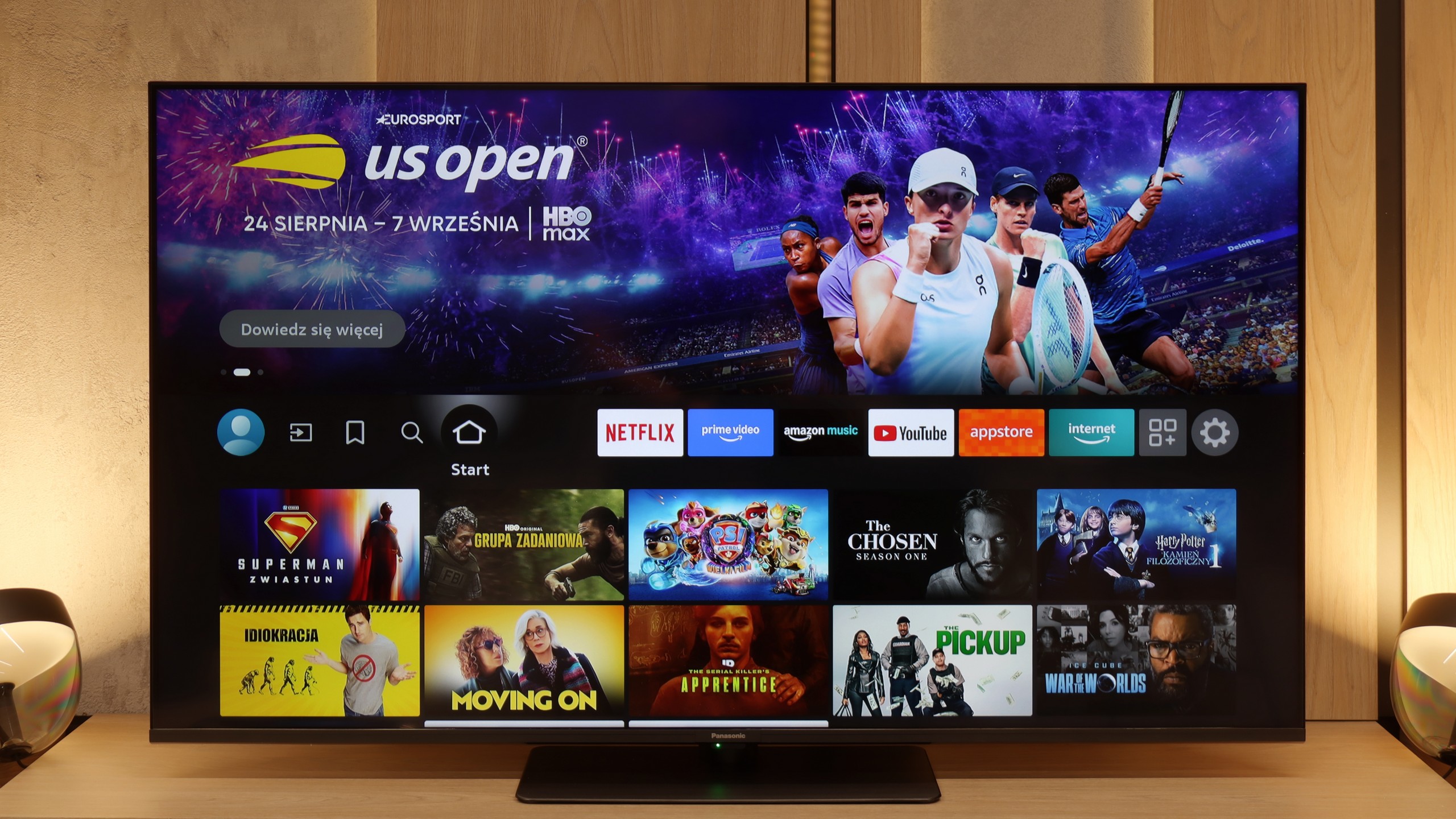
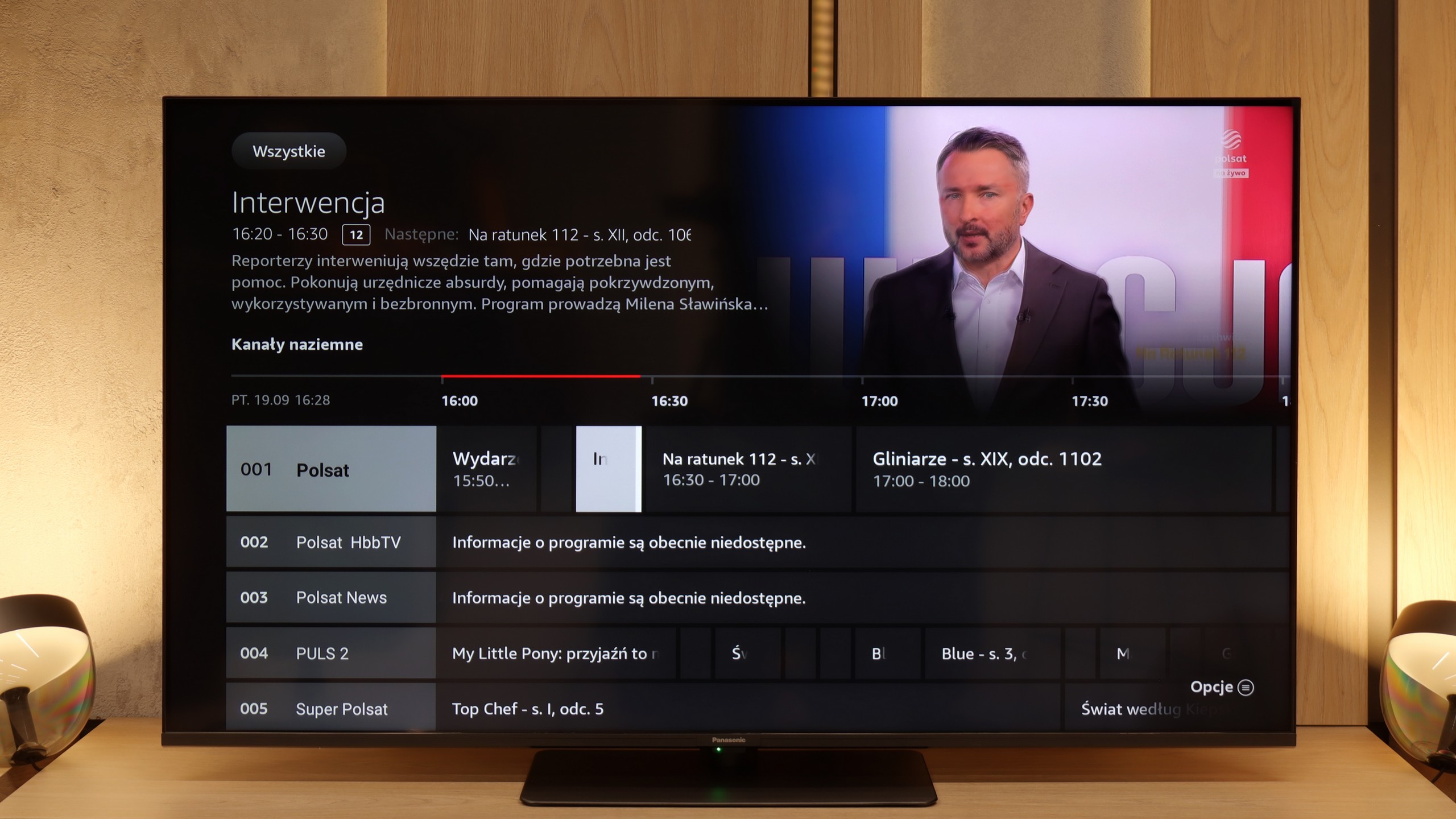
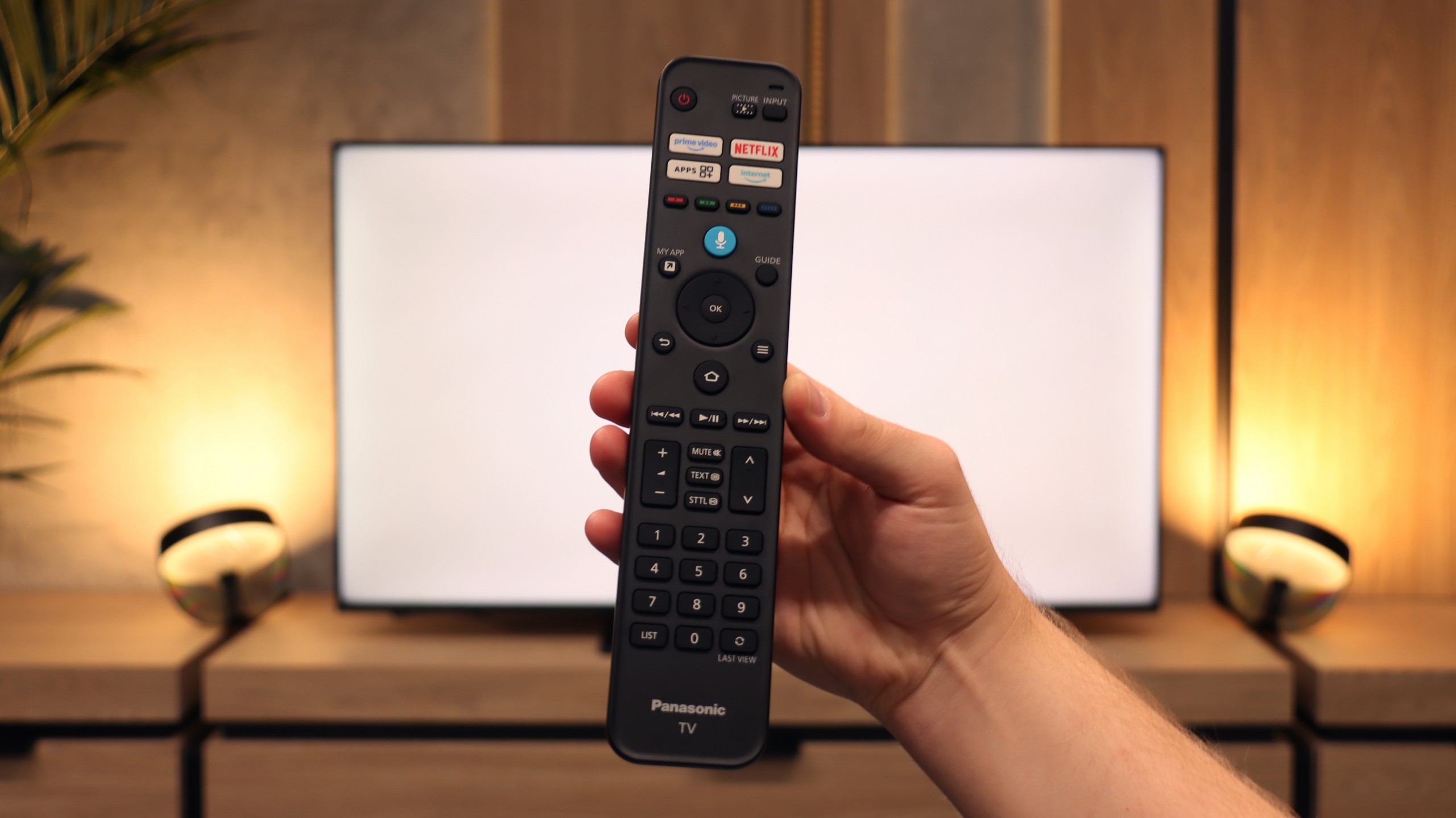
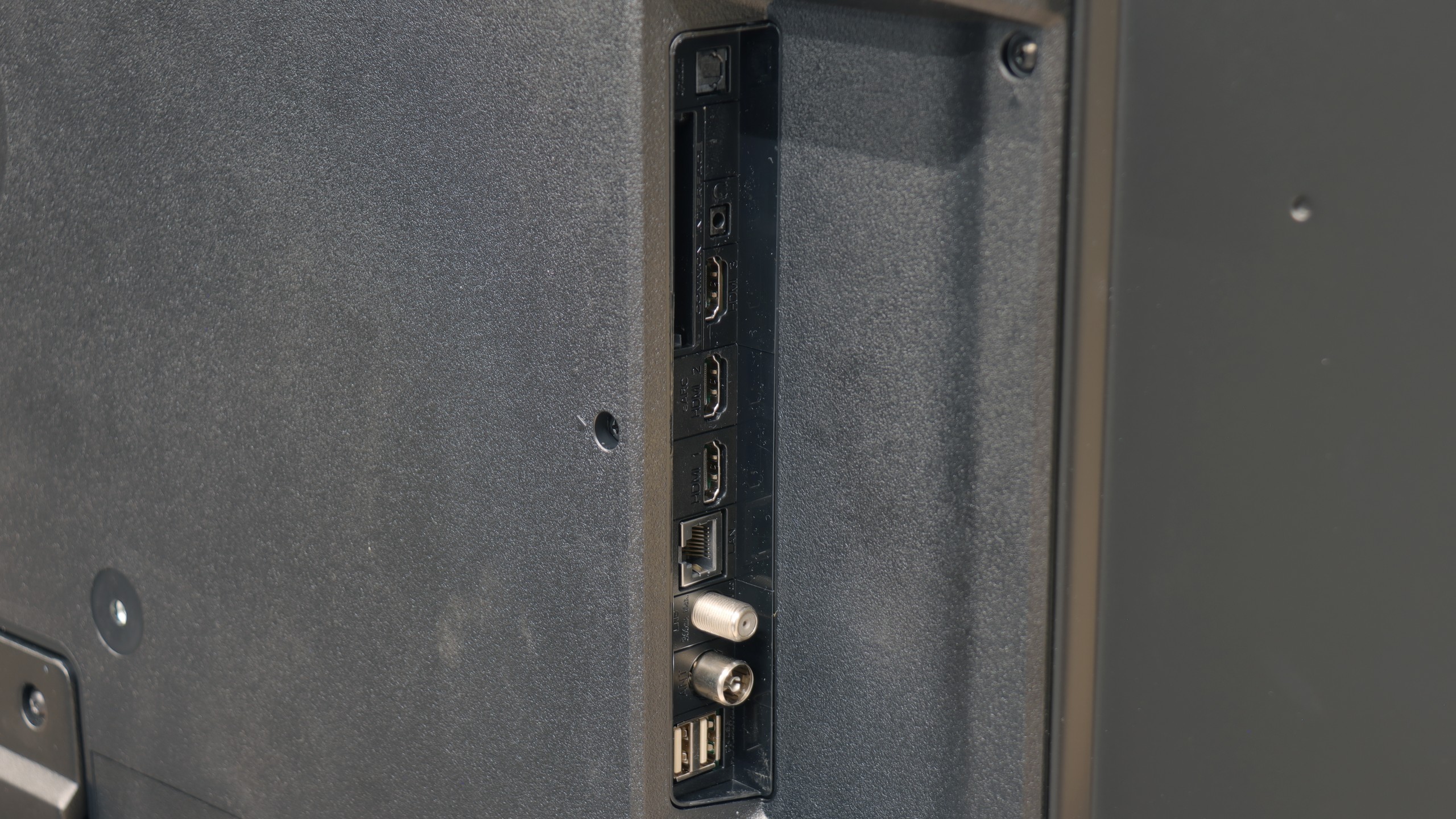
Before delving into the software that powers the Philips PML9009, it’s essential to highlight one of the standout features of the manufacturer’s TVs: the multicoloured Ambilight backlighting. This unique feature enhances the viewing experience by projecting colours from the back of the TV that correspond to the on-screen action, creating a more immersive atmosphere.
The operating system used in the PML9009 is Philips' proprietary TitanOs. While it offers some benefits, it is notably more closed and limited when compared to other models that use the Google TV system. One significant drawback is the absence of essential applications such as Apple TV, MAX, Canal+, and Player. Additionally, TitanOs restricts users from performing basic tasks like scheduling recordings or recording to USB. Apple device users may also be disappointed by the lack of AirPlay functionality, which allows for easy screen sharing.
On a positive note, the TV supports connecting a keyboard and mouse, which can simplify navigation through the menu. However, it's worth noting that while the remote pairs via Bluetooth for voice selection in English, all other functions rely on infrared (IR) connectivity.
In summary, TitanOs has its limitations, especially for users who frequently utilize a variety of streaming platforms. It seems better suited for those who primarily engage with a few key services—what one might refer to as the "holy trinity" of streaming: Netflix, YouTube, and CDA.
SmartTV: FireTV
The W85B runs on the Fire TV system and it must be admitted – this is a significant step forward compared to Panasonic's previous proprietary solutions. Here we have support for AirPlay, screen mirroring, and even voice control through Alexa. It sounds modern and in practice it actually offers quite a few possibilities. The problem is that in Europe, Fire TV still looks a bit like a "guest with luggage." It works decently, but there are occasional micro-stutters, the interface doesn’t always respond as smoothly as we would like, and you may encounter awkward translations in the menu. It’s not yet on the level of the major players like Google TV or even Tizen, but it is still an improvement over what Panasonic had before. However, the worst part of it all is that the Fire TV app library is quite modest and that is its biggest drawback.
Classic TV Features
In terms of classic television functionalities, it's quite good – we have a classic remote control with a full numeric keypad, a clear EPG guide, and the ability to record programs from the built-in tuner to an external USB drive (e.g., a flash drive). A downside is the lack of options to schedule recordings in advance – you can record "here and now," but you can't set recordings for later.
Playing files from USB
8.2/10
3.1/10
Supported photo formats:
Maximum photo resolution:

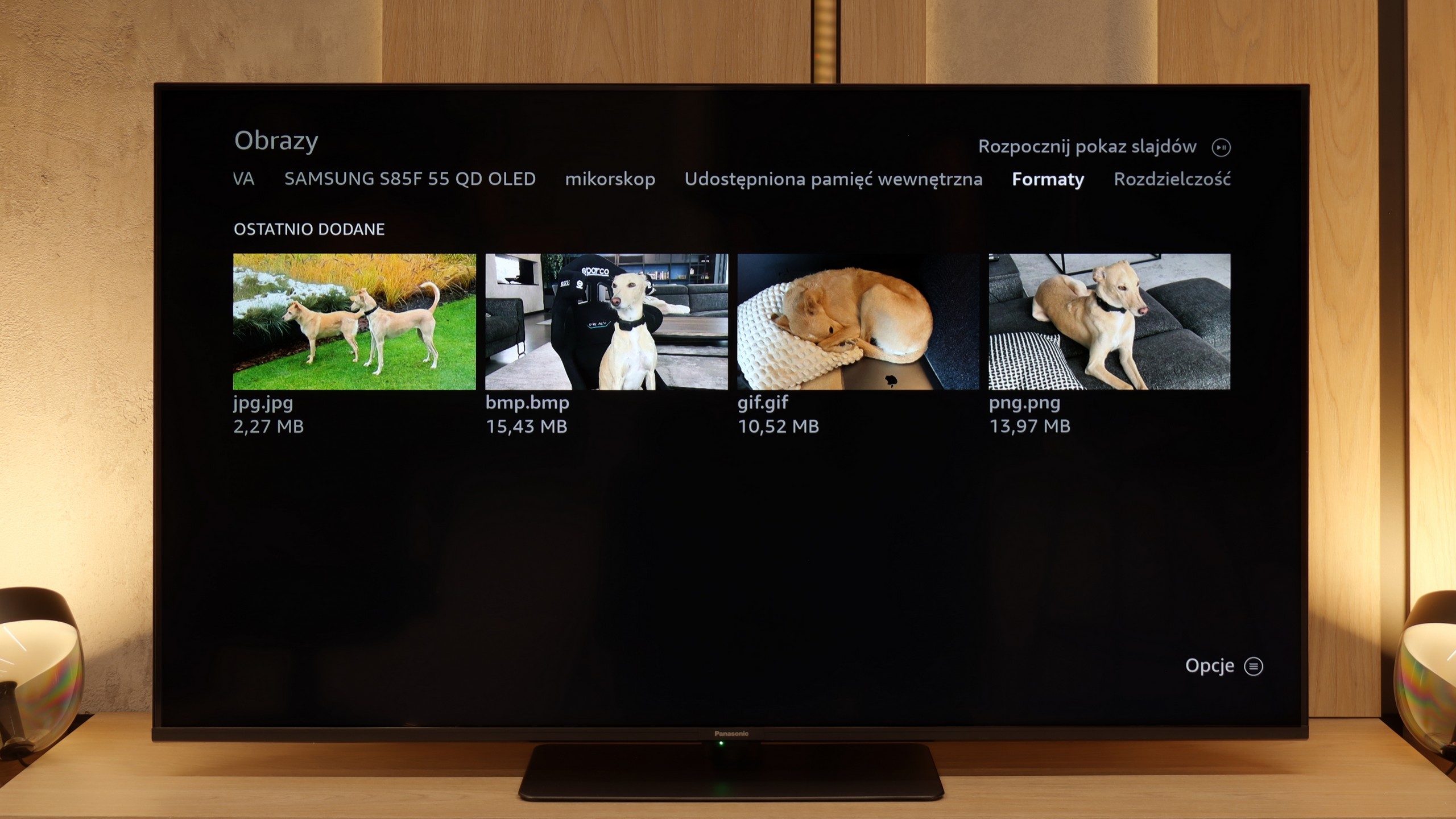
The default media player integrated into the Philips PML9009 provides a fairly comprehensive set of features but does have certain limitations. It supports nearly all common video formats except for the relatively rare .asf format. However, users may encounter issues due to the absence of the H.265 HEVC codec for high-bitrate content and a lack of support for .sub subtitle files, which are popular among many users.
With photo playback, the media player performs adequately, though it does not support some widely used resolutions and formats, such as HEIC, commonly found on Apple devices. The player excels in audio playback and leaves little room for criticism.
Unfortunately, the system's limitations prevent users from extending the player’s functionalities, meaning users are confined to the capabilities the manufacturer has included. This can be a drawback for those who rely on specific formats or additional features not provided by the built-in player.
The biggest problem with the built-in player on Fire TV is the lack of support for external subtitle files. If you have your own movie library and use text files, you simply won't be able to display them on this TV. The player itself handles basic video formats, but if someone wanted to fully utilize files from USB, they would likely end up installing an additional app from the store (e.g., VLC).
Apps
6.2/10
7.6/10














































Sound
6.7/10
5.8/10
- Maximum volume-87dB
- Dolby Digital Plus 7.1
- Dolby True HD 7.1
- Dolby Atmos in Dolby Digital Plus (JOC)
- Dolby Atmos in Dolby True HD
- DTS:X in DTS-HD MA
- DTS-HD Master Audio
At the outset, it is worth noting that sound quality is a subjective matter. The built-in audio system in the Philips PML9009 is characterised by clear high tones, but the bass is quite flat and significantly worse than in competing models in the same price range.
Here, the Panasonic W85B unfortunately has nothing to brag about. The speakers sound flat and rather "plastic," so cinematic experiences are definitely not to be had here. There is no depth, no clear bass – just basic sound that merely "exists." It's a shame because we thought the external subwoofer used here would actually make a difference. Unfortunately, we were mistaken. The only advantage is that the television can play really loudly. This might appeal to older users who often need higher volume to comfortably watch programs or news. For everyday TV viewing, it’s enough, but if someone is thinking about movies and gaming – an additional soundbar or audio system is essentially a must.
Sound Quality Test
No sound test video
Acoustic Measurements
No acoustic data
87dBC (Max)
75dBC
